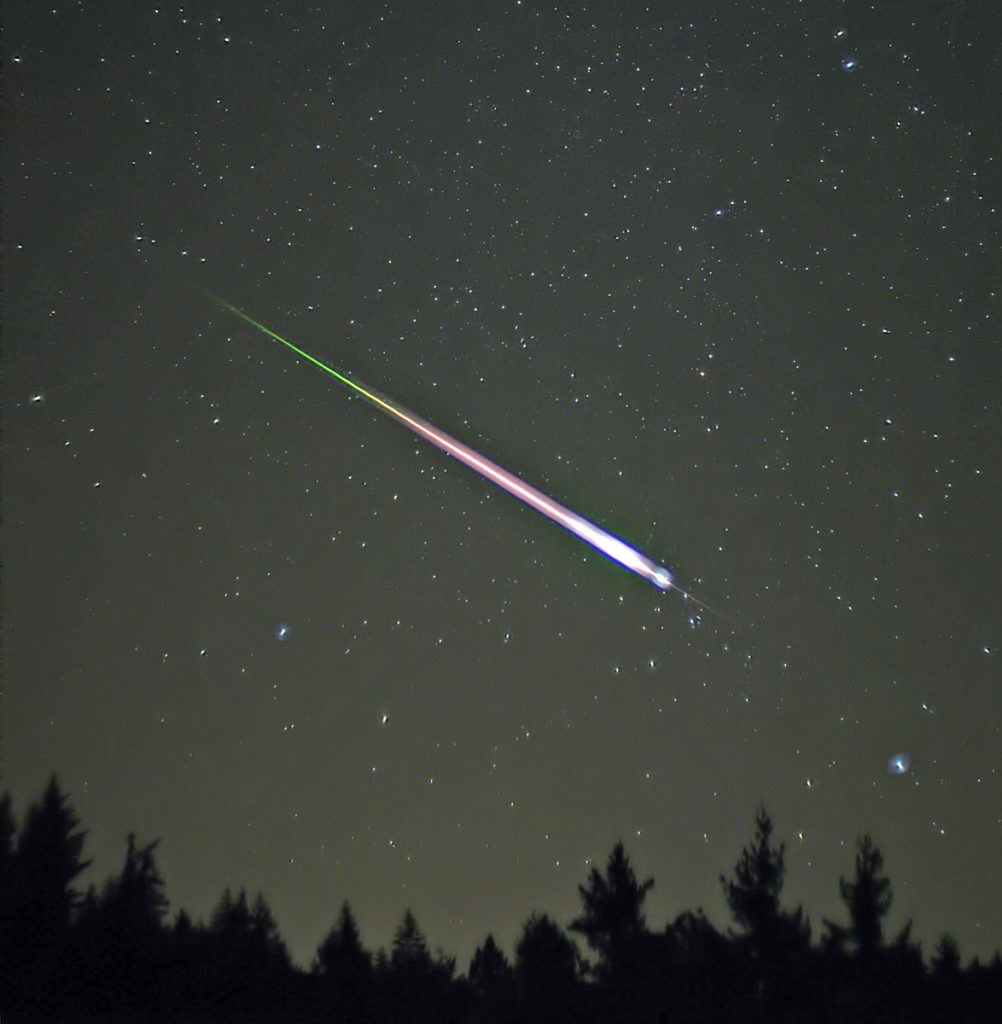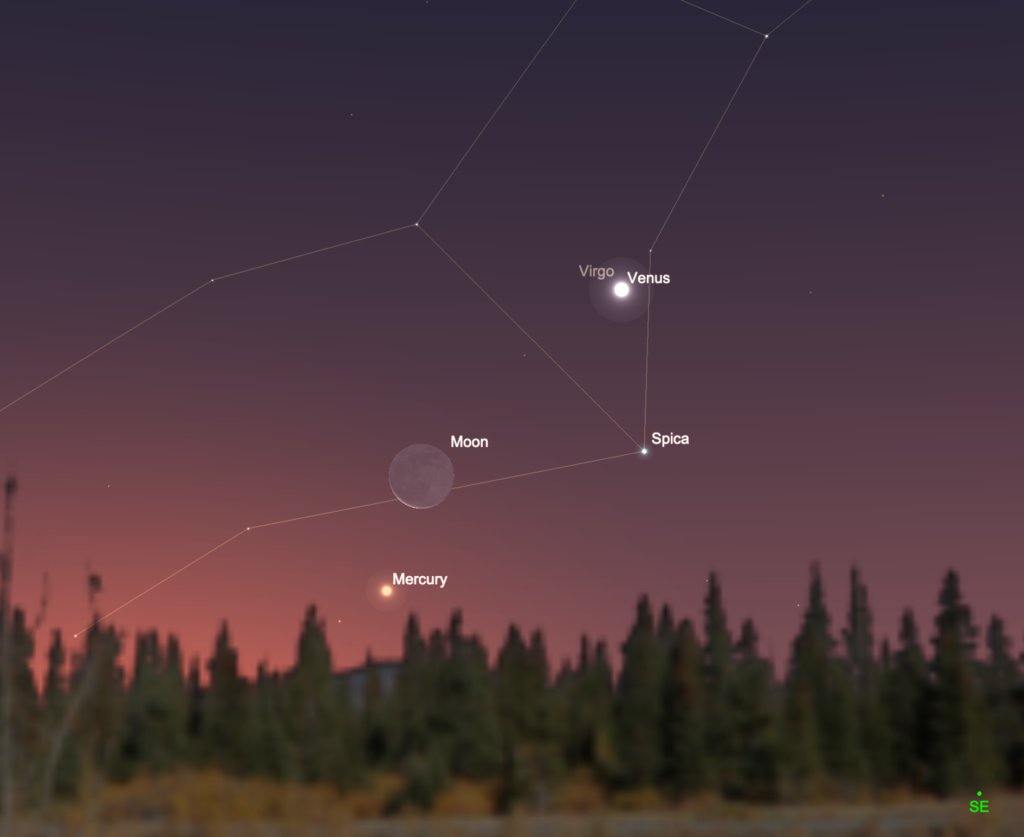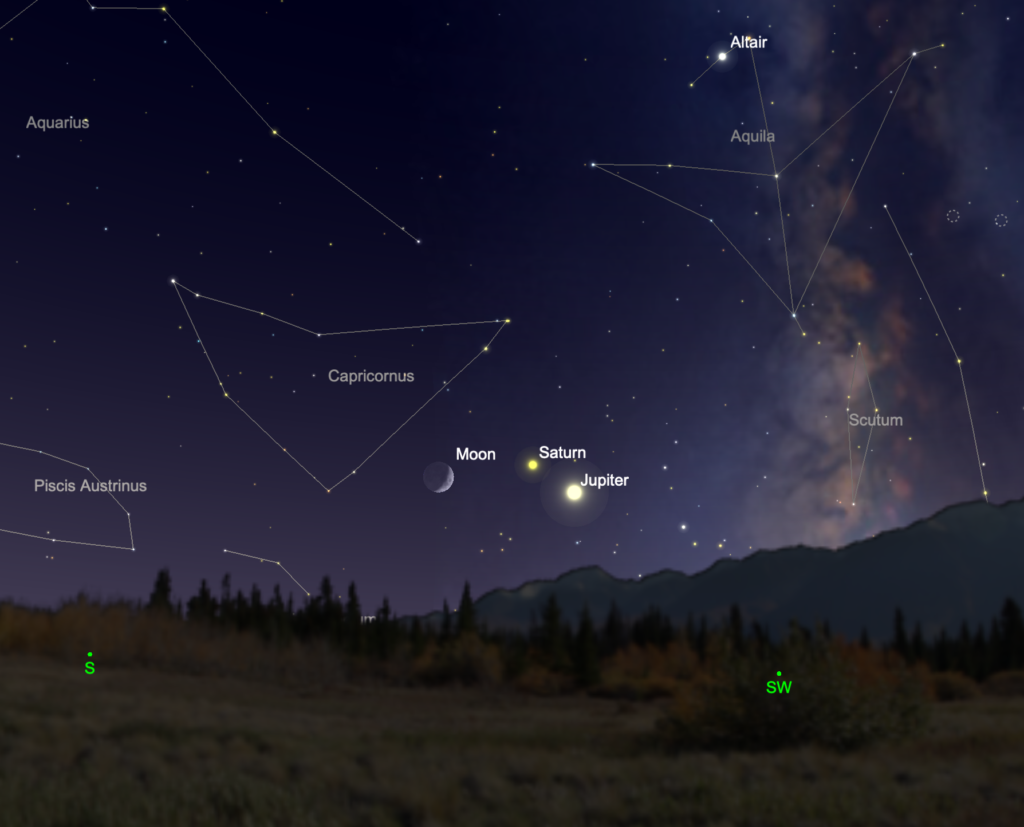
As November arrives, northern stargazers enjoy earlier sunsets and longer and cooler stargazing sessions, while southern-hemisphere observers now enjoy the warmer nights of spring. For deep-sky watchers, there are plenty of open star clusters in Cassiopeia and Perseus, and lots of galaxies in Pegasus, Sculptor, and elsewhere. Orion rises late in the evening and dominates the southern sky after midnight, while the stars of northern spring rise before dawn. The bright planets Mars, Jupiter, and Saturn are just past their prime for the year but still big enough for observing in a telescope, while Venus and Mercury adorn the pre-dawn sky. Add in a couple of meteor showers and it makes for an excellent month of stargazing. Here’s what to see in the night sky this month…
1 November 2020. If you live in North America, make sure you turn your clocks back by one hour as Daylight Saving Time ends. If the weather allows, use your extra hour for stargazing!
1 Nov. Haven’t seen Mars yet? It’s not too late, but don’t put it off much longer. The planet is now about three weeks past its closest approach to Earth, yet as the month begins it still spans an impressive 20”, plenty big enough to offer up some tantalizing detail in a telescope in steady sky. It shines at a spectacular magnitude -2.1, far brighter than any star and about as bright as Jupiter. If you need some tips on observing the Red Planet, the Cosmic Pursuits ‘Mars Observing Guide’ will get you started.
6-12 Nov. The Taurid meteor showers peak this week. There are two, the Northern and Southern Taurids, and they both peak in late October through mid-November. They’re sometimes called the Halloween Fireballs. You can see these bright, slow-moving fireballs in the northern and southern hemispheres at essentially any time of night. Expect a modest 5-10 meteors an hour.
8 Nov. Last Quarter Moon, 13:46 UT

13 Nov. Look to the east-southeastern sky before sunrise to see Mercury, Venus, and a slender crescent Moon low over the horizon. The bright star Spica also joins the show. Just three days past greatest western elongation from the Sun, Mercury sits about 5o below the Moon and well separated from the Sun. The planet shines at magnitude -0.7, making it easy to spot with a pair of binoculars in the early-morning glow. Venus lies about 10o northwest of Mercury and shines far brighter at magnitude -4.0. After today, these two inner planets sink towards the horizon for the rest of the month but they’re well worth following over the next several mornings.
15 Nov. New Moon, 05:07 UT
17 Nov. The Leonid meteor shower peaks today. Just past new, the Moon stays out of the way this year, so skies will be dark and promising, especially after midnight when the most meteors should be visible. The Leonids have been a dud these past many years. But it was not always so. A couple of decades ago and earlier, this was an excellent meteor shower, and it once exploded into a meteor storm during which tens of thousands of meteors each hour filled the night sky. But if you’re up late (or early), take a look for a few Leonids and enjoy what you can of this historic meteor shower.

19 Nov. The waxing crescent Moon joins Jupiter and Saturn low in the southwestern sky as darkness falls. Jupiter and Saturn are just 3o apart and continue to get closer on the way to a spectacular conjunction just before Christmas. Northern-hemisphere observers with dark sky can look to the right of Jupiter and Saturn to see the Milky Way thrusting directly upwards perpendicular to the horizon in the evening hours. Southern observers see the Milky Way in a low arc over the southwestern horizon as darkness falls.
Jupiter and Saturn still present sufficiently large disks to encourage telescopic observation. The bigger planet averages a brightness of magnitude -2.1 and an apparent size of about 36” this month. Saturn is steady at magnitude +0.6 and spans, with its rings, about the same apparent size as Jupiter. They’re both relatively low in the southwest after dark for northern observers but still high and bright seen from the southern hemisphere.
22 Nov. First Quarter Moon, 04:45 UT
25 Nov. Mars and the waxing gibbous Moon lie just 5o apart well above the southwestern horizon after dark. The planet has faded nearly a full magnitude since the start of the month, now shining near magnitude -1.2 with a disk about 14.8” across. It will still reveal a little detail in a telescope on nights of good seeing.
30 Nov. Full Moon, 09:30 UT